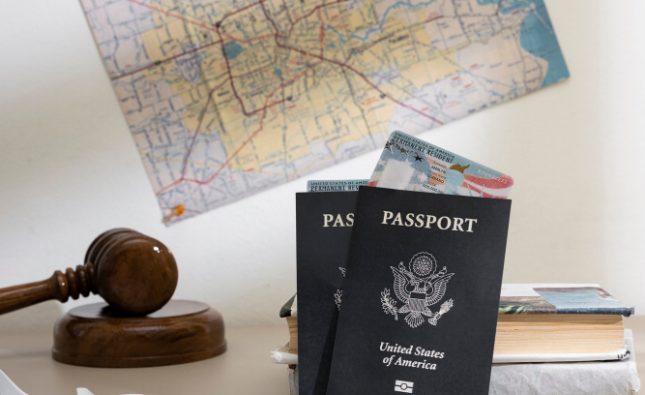
As contentious debates about immigration continue to dominate political discourse, it’s imperative that we tackle this issue with a balanced approach. On one hand, we must prioritize national security and ensure the safety of our citizens. But on the other hand, we cannot ignore the humanitarian concerns surrounding immigration policy. In this blog post, we’ll delve into the complexities of immigration reform and explore ways to balance these two crucial priorities for a better future.
Background of Immigration Reform
The U.S. immigration system is considered one of the most complex and closely guarded in the world. The country has a long history of welcoming people from all over the world, with different cultures and religions blended together. However, this openness has come at a cost; the U.S. immigration system is rife with flaws that have led to problems such as illegal immigration and wage disparities.
To address these issues, lawmakers in both parties have been working on comprehensive immigration reform legislation for years now. The proposed legislation would provide a path to citizenship for undocumented immigrants living in the country, as well as tighten up laws relating to employment and education. It would also create a new visa program for high-skilled workers and invest in border security measures.
There are concerns about how this bill will be received by the public and how it will affect national security. Some say that it is too lenient on undocumented immigrants, while others argue that it is necessary to address the problem of illegal immigration before it becomes a bigger issue. In any case, lawmakers are hopeful that they can reach an agreement on the bill before the election season heats up.
The four pillars of immigration reform
The four pillars of immigration reform are: 1) border security; 2) a legal immigration system that is based on merit and skills; 3) illegal immigration should be eliminated; and 4) enhanced enforcement of U.S. immigration laws.
Border security is the most important pillar of immigration reform because it addresses the biggest challenge of illegal immigration: the flow of people across our borders illegally. Border security measures must include a physical barrier along the southern border, as well as better intelligence and surveillance systems to deter and detect unauthorized entries into the United States. We also need to increase resources for law enforcement agencies so that they can more effectively enforce our immigration laws.
A legal system that is based on merit and skills is another key element of comprehensive immigration reform. We need to create a system that allows people who are seeking entry into the United States to do so in a way that is consistent with our national values and interests. We should also ensure that those who are already living in the United States have an opportunity to become citizens if they meet certain qualifications.
Illegal immigration should be eliminated because it is unjust and expensive, both for taxpayers and for American workers who compete for jobs against undocumented immigrants. We should also eliminate incentives for people to come to the United States illegally by creating a path to citizenship and providing relief from economic sanctions programs currently in place against countries who do not allow their citizens to migrate to the United States legally.
Enhanced enforcement of U.S. immigration laws
The E-Verify System
The E-Verify System
If you are looking to work in the United States, one of the first things you will need to do is apply for a job and get federal employment eligibility verification (E-Verify) clearance. The E-Verify system is a database that contains information on all employees who are authorized to work in the United States. If an employee’s name appears in E-Verify, the employer can be confident that the employee is eligible to work in the United States.
Since its inception, E-Verify has been recognized as a valuable tool for preventing illegal immigration and protecting national security. By checking whether an applicant is authorized to work in the United States, employers can avoid hiring unauthorized workers and reduce their potential liability for employing illegal immigrants. Additionally, by confirming that all employees are legally authorized to work in the United States, E-Verify helps ensure compliance with federal immigration laws.
Despite its benefits, there have been concerns about E-Verify’s accuracy and potential privacy violations. Some opponents of immigration reform argue that E-Verify should not be used to screen out potential legal immigrants because it could lead to discrimination against certain groups of people. Others argue that E-Verify should not be used at all because it creates a digital record of citizens’ personal information that could be accessed by government officials without proper justification or judicial oversight.
Despite these criticisms, overall support for E-Verify remains high among both Republicans
DACA and DAPA
Since the creation of DACA in 2012 and DAPA in 2014, respectively, immigrants who were brought to the U.S. as children have been living in fear of being deported or separated from their families. This year, Congress is considering two immigration reform bills that may affect these individuals: the Dream Act and the Border Security, Economic Opportunity, and Immigration Modernization Act (B SEOMA).
The Dream Act would allow eligible immigrants to become citizens if they meet certain qualifications such as being enrolled in school or having a clean criminal record. DAPA would provide a similar pathway for undocumented immigrants who were parents of US citizens or lawful permanent residents when they were detained and registered with the government. However, both bills have faced opposition from members of Congress who say that they will increase illegal immigration and put national security at risk.
Supporters of immigration reform argue that it is important to provide a path to citizenship for millions of people who are living in the United States without legal status because it would encourage them to come out of the shadows and report any potential crimes that they may be committing. They also argue that providing a path to citizenship would help reduce crime rates by creating an economically stable population that is more likely to vote and develop civic engagement.
Some critics of immigration reform argue that it is not necessary because we already have laws on the books that allow undocumented immigrants to stay in the United States if they meet certain requirements such as having no felony convictions or being sponsored by a family
Conclusion
In the United States, there is a heated debate taking place over immigration reform. On one side are those who believe that any form of reform must take into account the national security concerns of the United States. They argue that unchecked immigration has led to an increase in crime, poverty and other social ills in America. On the other side are those who say that we cannot ignore our humanitarian obligations towards people fleeing violence and persecution. They point out that recent immigrants have made enormous contributions to American society, and should not be summarily deported without due consideration for their safety and well-being. In my opinion, both sides have legitimate points to make. Immigration reform must be thoughtful and deliberate; it cannot be rushed or implemented haphazardly. At the same time, we cannot forget our humanitarian responsibilities towards people who are seeking refuge from oppression and violence abroad. We need to find a balance between these two imperatives if we want to achieve lasting progress on this important issue










